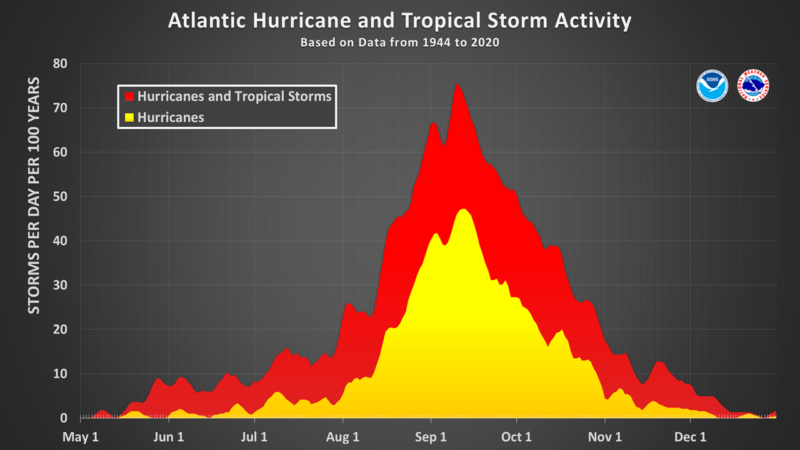The writer of this piece, Eric Berger, covered hurricanes, NASA, and other sciency stuff at the Houston Chronicle for going-on two decades. He was one of our go-to hurricane commenters. I don't recall him ever writing "Houston we have a problem.
From Ars Technica, September 11:
Seasonal activity is running 50 percent below normal levels.

The Atlantic hurricane season peaks on September 10.
To state the obvious: This has been an unorthodox Atlantic hurricane season.
Everyone from the US agency devoted to studying weather, oceans, and the atmosphere—the National Ocean and Atmospheric Administration—to the most highly regarded hurricane professionals predicted a season with above-normal to well above-normal activity.
For example, NOAA’s outlook for the 2022 Atlantic hurricane season, which runs from June 1 to November 30, predicted a 65 percent chance of an above-normal season, a 25 percent chance of a near-normal season, and a 10 percent chance of a below-normal season. The primary factor behind these predictions was an expectation that La Niña would persist in the Pacific Ocean, leading to atmospheric conditions in the tropical Atlantic more favorable to storm formation and intensification. La Niña has persisted, but the storms still have not come in bunches.
All quiet
To date the Atlantic has had five named storms, which is not all that far off "normal" activity, as measured by climatological averages from 1991 to 2020. Normally, by now, the Atlantic would have recorded eight tropical storms and hurricanes that were given names by the National Hurricane Center...
....MUCH MORE
Here's the latest map from the National Hurricane Center:

Two disturbances coming off the African/Cape Verde Main Development Zone that the NHC gives five-day development potential of 30% for #1 and 20% for #2.